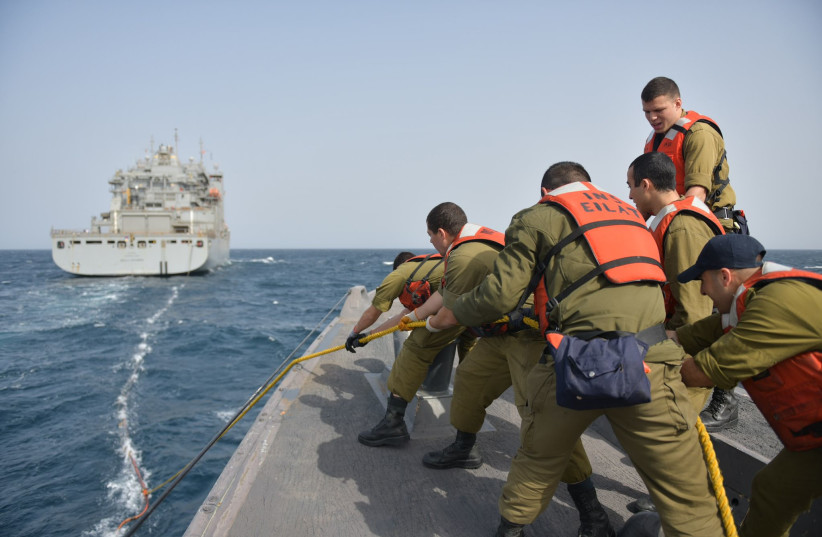As concern over Iran's maritime activity in the Red Sea increases, the Israel Navy is taking part in a joint drill with their American counterparts from the US 5th Fleet.
Though few details were available about the four-day drill, it was focused on mission planning, maritime interdiction and more, according to the US Navy.
The ships taking part include the USS Nitze, an Arleigh Burke-class destroyer with a crew of 360; the USS Lewis B. Puller, an expeditionary sea base that supports a wide variety of missions, including counter-piracy operations, maritime security operations, humanitarian aid, disaster relief and crisis response operations; and the USNS Matthew Perry, a Clark-class dry cargo ship. They will sail alongside Israel’s INS Eilat and INS Keshet, both Sa’ar 4 missile ships.
The drill comes shortly after Defense Minister Benny Gantz warned that Iran has been expanding its activities in the maritime arena. “The presence of Iran’s military forces in the Red Sea in recent months is the most significant in a decade,” he said, and that Iran, which is “methodically” basing itself in the Red Sea, “is a direct threat to trade, energy and the global economy.”
Iran has been working to upgrade its navy, and in so doing, introduced new vessels and submarines to bolster the country’s aging fleet. The Islamic Republic has regularly harassed and attacked international shipping tankers, including oil tankers.

Naval upgrades
The US 5th Fleet’s area of operations encompasses 2.5 million square miles, and includes the Arabian Gulf, Gulf of Oman, Red Sea, parts of the Indian Ocean, and three critical choke points at the Strait of Hormuz, the Suez Canal and the Bab al-Mandab Strait.
Since moving from US European Command (EUCOM) to US Central Command (CENTCOM), Israel has held several drills with the US Air Force Central Command (AFCENT) and US Naval Forces Central Command (NAVCENT).
Israeli troops have held several drills with CENTCOM, AFCENT and NAVCENT since the move, including one in November with Bahrain and the United Arab Emirates in the Red Sea.
The move to CENTCOM is believed to simplify the cooperation with American troops in the region, and create the potential for a regional coalition with Arab countries that have normalized ties with Israel against shared threats posed by Iran.
In February, the Navy took part in the biennial International Maritime Exercise (IMX) led by the NAVCENT, which saw the participation of more than 9,000 personnel and up to 50 ships from more than 60 militaries and international organizations.
